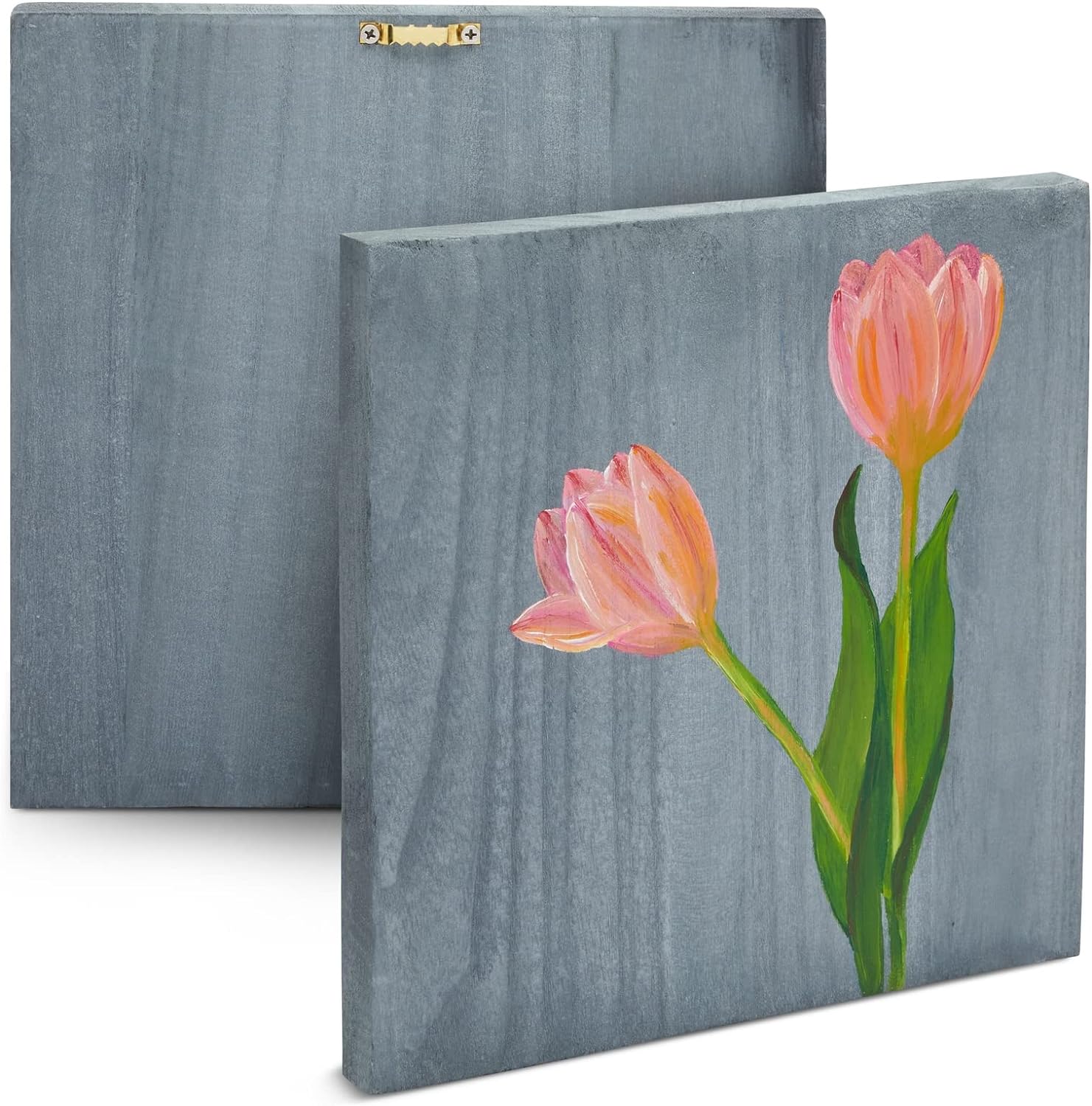Sublimation printing is a fascinating process that has captivated the interest of many in the creative and printing industries. This innovative technique involves transforming a design from a solid state directly into a gaseous state, bypassing the liquid phase entirely, to transfer it onto a substrate. But when it comes to unique surfaces like wood, many wonder about the feasibility and effectiveness of sublimation. Specifically, the question arises: Can you sublimate on painted wood? This comprehensive guide aims to shed light on this intriguing possibility, exploring the nuances of sublimation on various materials, with a special focus on painted wood.
Can You Sublimate on Painted Wood?
Yes, you can sublimate on painted wood, provided the wood is properly prepared and the correct type of paint is used. The process involves applying a special sublimation ink to the painted wood surface and then using heat to transfer the ink into the paint layer, creating vibrant and durable designs. It’s important to use paint that can withstand the high heat required for sublimation and ensure the wood surface is smooth and clean. Acrylic paint is often recommended due to its compatibility with the sublimation process. Successful sublimation on painted wood can result in unique and personalized items, from home decor to custom gifts, offering a creative way to enhance the natural beauty of wood with personalized designs.
The Unique Qualities of Wood in Sublimation
Wood, with its natural warmth and unique grain patterns, offers a rustic charm that is highly sought after in the world of decor and personalization. When it comes to sublimation, however, wood presents a unique set of challenges and opportunities. The key factor that makes wood a candidate for sublimation is its surface treatment. Painted wood, in particular, can serve as an excellent substrate for sublimation, provided the paint used is compatible with the sublimation process.
The benefits of using painted wood as a substrate are manifold. Painted surfaces can offer a smoother, more uniform area for the sublimation ink to adhere to, resulting in clearer and more vibrant images. Moreover, the paint layer can act as a barrier, protecting the wood underneath and extending the life of the sublimated design.
However, there are common misconceptions and concerns regarding sublimating on painted wood. One major concern is the potential for the heat required in the sublimation process to damage or warp the wood. It’s also important to consider the type of paint used, as not all paints are suitable for sublimation. These challenges highlight the importance of understanding the specific characteristics of wood as a substrate for sublimation and the need for proper preparation and technique.
Preparing Painted Wood for Sublimation
Diving into the world of sublimation on painted wood requires a bit of groundwork to ensure that your creative endeavors yield the best possible results. The preparation stage is crucial, as it sets the foundation for a successful sublimation process. This section will guide you through the necessary steps to prepare your painted wood substrate, ensuring it’s primed and ready for the transformation process.
Step 1: Selecting the Right Type of Paint
The journey begins with selecting the right type of paint for your wood. Not all paints are suitable for sublimation; the paint must be capable of withstanding high heat and absorbing the sublimation ink. Acrylic paint is often recommended due to its durability and compatibility with sublimation techniques. Opt for a smooth, light-colored paint to ensure that your designs pop and retain their vibrancy.
Step 2: Surface Cleaning and Priming
Before you can begin sublimating, it’s essential to ensure that your painted wood surface is clean, smooth, and free from any impurities. Start by gently wiping down the surface with a clean, damp cloth to remove dust and debris. If the wood has been previously used or has rough spots, consider lightly sanding the surface with fine-grit sandpaper. This will create a smooth canvas for your sublimation design, minimizing imperfections and ensuring a more even transfer.
Step 3: Ensuring a Smooth Substrate
Achieving a smooth substrate is paramount for high-quality sublimation results. Once your painted wood is clean and sanded, apply a final layer of paint if necessary, using smooth, even strokes to avoid brush marks and unevenness. Allow the paint to dry completely according to the manufacturer’s instructions. A smooth, well-prepared surface will not only enhance the clarity and vibrancy of your sublimated design but also ensure its longevity.
Throughout this preparation process, it’s important to keep in mind the end goal: creating a seamless and vibrant sublimated image on wood. By carefully selecting the right type of paint, ensuring the surface is impeccably clean and smooth, and priming your wood for sublimation, you’re laying the groundwork for a successful and rewarding creative endeavor.
Best Practices for Sublimating on Painted Wood

Once your painted wood is meticulously prepared, it’s time to embark on the exciting phase of actual sublimation. This process requires careful attention to detail and adherence to best practices to ensure that your designs are not only vibrant but also long-lasting. Here, we’ll delve into the recommended settings, techniques, and tips to help you navigate the sublimation process on painted wood with confidence.
Optimal Heat and Pressure Settings
The cornerstone of successful sublimation lies in the correct application of heat and pressure. For painted wood, the temperature settings can vary slightly from those used for other substrates like fabric or ceramic. A general guideline is to set your heat press or sublimation oven to around 375-400°F (190-204°C) and apply medium to high pressure for about 60-90 seconds. However, these settings can vary depending on your specific equipment and the type of paint and wood you’re using, so it’s essential to conduct a few test runs to find the optimal conditions for your setup.
Navigating Potential Challenges
Sublimating on painted wood can present unique challenges, such as the risk of paint discoloration or wood warping due to the high heat. To mitigate these issues, it’s crucial to ensure that the paint used on your wood is heat-resistant and specifically formulated for sublimation purposes. Additionally, using a protective silicone or Teflon sheet between the heat source and the painted wood can help distribute the heat more evenly and protect the surface from direct heat damage.
Achieving Vibrant and Long-lasting Images
For the most vibrant results, use high-quality sublimation inks and printers capable of producing dense, rich colors. The quality of your initial design also plays a significant role in the final outcome. Ensure that your designs are high-resolution to prevent pixelation and loss of detail during the transfer process.
Moreover, the smoothness of your painted wood surface directly influences the clarity and vibrancy of the transferred image. Any imperfections in the paint can lead to uneven or faded areas in your design. Therefore, the preparation phase’s thoroughness is paramount for achieving the best possible sublimation results on painted wood.
Read: Can you sublimate on powder coated tumblers?
Creative Possibilities with Sublimation on Wood
Sublimating on painted wood opens up a treasure trove of creative possibilities, allowing you to transform ordinary wooden items into personalized works of art. From home decor to unique gifts, the versatility of sublimated wood is boundless. In this section, we’ll explore some inspiring ideas and encourage you to unleash your creativity by experimenting with various wood types and sublimation techniques.
Personalized Home Decor
Imagine turning a plain wooden coaster, plaque, or wall hanging into a vibrant piece of personalized decor. Sublimation allows you to transfer any design, photo, or artwork onto painted wood, giving you the freedom to create custom pieces that reflect your style or commemorate special moments. Whether it’s a set of coasters with family photos or a wall plaque with an inspirational quote, sublimated wood adds a personal touch to any space.
Unique Gifts and Keepsakes
Sublimated wood items make for thoughtful and unique gifts. Customize a wooden keychain, photo frame, or jewelry box with a special message, image, or design to create a memorable keepsake. The durability and quality of sublimated images ensure that these gifts will be cherished for years to come.
Custom Decor and Signage
Sublimation on wood is not limited to small items; it can also be applied to larger wooden panels for custom signs, artwork, and decor pieces. This technique offers endless possibilities for business signage, personalized wedding decor, or large-scale art installations. The natural texture of wood combined with vibrant sublimated colors creates a stunning visual impact that is both modern and rustic.
Experimenting with Different Wood Types
While painted wood is a common substrate for sublimation, don’t hesitate to experiment with various types of wood and finishes. Each wood species has its unique characteristics, such as grain pattern and color, which can add an extra layer of depth and texture to your sublimated designs. Remember, the key to success lies in the preparation of the wood surface to ensure it’s compatible with the sublimation process.
Encourage your creative exploration by trying out different techniques, such as blending sublimated areas with unpainted wood for a mixed-media effect or using stencils to create intricate patterns.
Read: Can You Sublimate on Acrylic Beanies?
Conclusion:
Sublimating on painted wood opens up a world of creative possibilities, allowing for the transformation of simple wooden items into personalized masterpieces. By understanding the sublimation process, properly preparing the wood surface, and adhering to best practices, you can achieve vibrant, lasting designs on painted wood. Whether you’re creating unique home decor, bespoke gifts, or custom signage, the key lies in experimentation and refining your technique. Troubleshooting common issues will further enhance your skills, making each project better than the last. Embrace the potential of sublimation on painted wood and unleash your creativity to bring your visions to life on this versatile and natural substrate.

